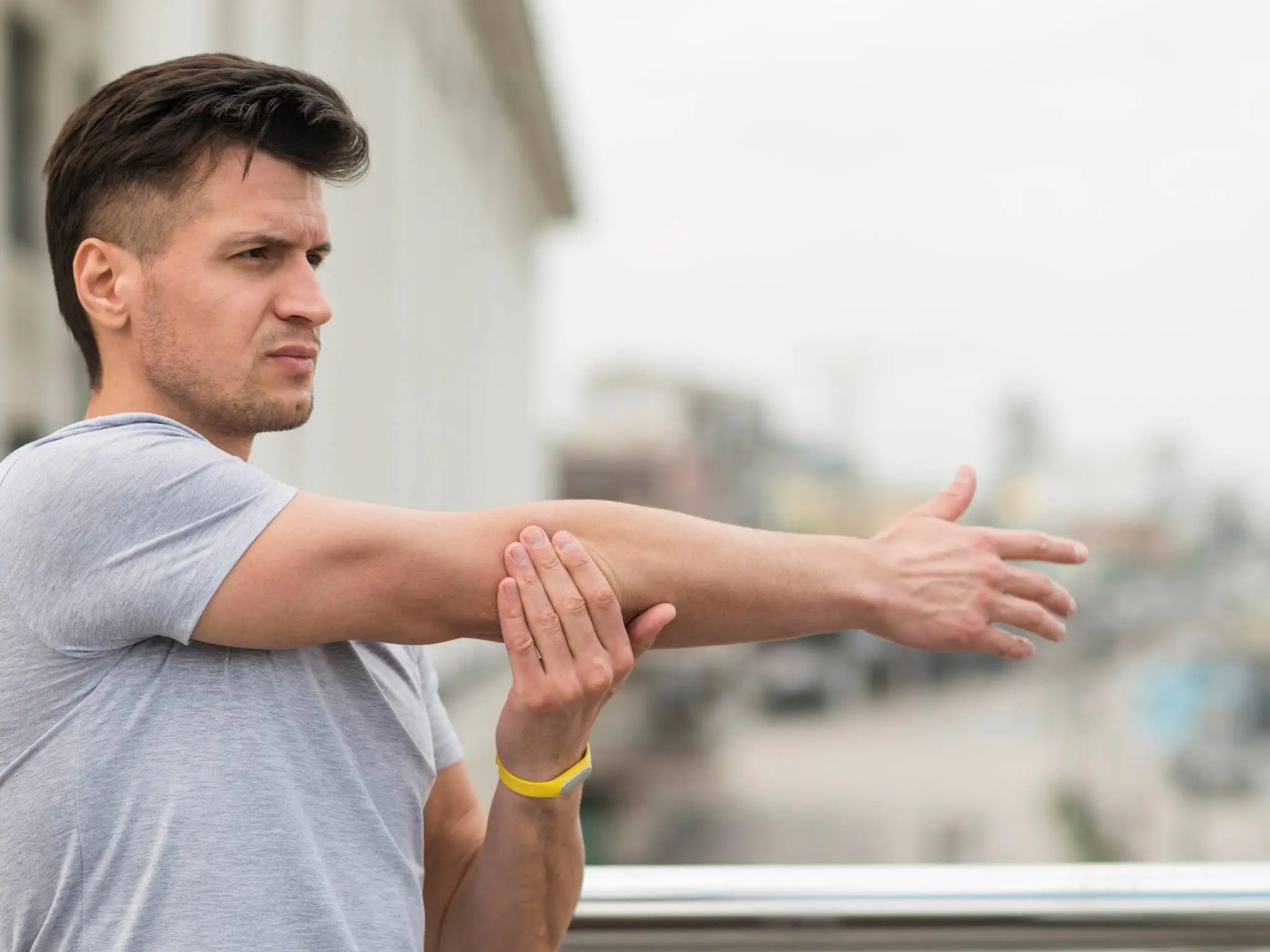If you’ve ever played racquet sports, you may have experience with tennis elbow. This common condition is a form of tendinitis that causes pain in the elbow and arm. It’s often the result of repetitive motions, like gripping a racquet between the thumb and first two fingers. This repetition can put a strain on the muscles and place too much stress on the tendons. Eventually, this constant tugging will create microscopic tears in the tissue. In a game of tennis, the following movements can lead to this condition:
- A late forehand swing, causing the player to bend the wrist significantly
- Snapping and turning the wrist forcefully during a powerful serve
- One-handed backhand using poor form or bad technique
Tennis elbow, however, doesn’t just affect tennis players. Although it is often caused by racquet sports, other common triggers include typing, painting and carpentry. Cooks, butchers and assembly line workers get tennis elbow quite often.
If you think you’re suffering from tennis elbow, it’s best to see a health professional for confirmation. If treated early, this overuse injury is fully curable and it’s very possible to resume normal activities rather quickly.
Symptoms
If you have a case of tennis elbow, chances are you’ll have tenderness on the outside portion. Tennis elbow is often accompanied by soreness of the forearm muscles, and the pain will intensify when grasping at an object. In some cases, this pain may go as far as the back of the middle and ring fingers. Elbow stiffness will be particularly worse in the morning with a persistent ache that lasts throughout the day. Symptoms can range from mild discomfort to an intense pain that can be felt even when your elbow is still.
Tennis elbow may cause the most pain when you lift something, make a fist, open a door or straighten your wrist. It’s important to note this injury should not be confused with golfer’s elbow, which affects tendons on the inside of the elbow.
It’s important to call your healthcare professional if you notice the following:
- Pain that limits your daily activities
- Pain that persists despite taking anti-inflammatory painkillers
- Weakness or numbness in the hands, which could be a sign that another condition is developing
If tennis elbow is left untreated, the pain could become chronic. Over a period of a few weeks to a few months, your elbow may become so inflamed that it may be excruciating to the touch. In some cases, tennis elbow can affect both arms.
Treatment
There are many different treatment options for tennis elbow, but physiotherapy is the most popular and effective one. To diagnose your condition, your physiotherapist will perform a thorough examination. This assessment may also require imaging tests like an X-ray or MRI to confirm tennis elbow or rule out any other problems.
In many cases, patients will see a physiotherapist when tennis elbow is no longer acute. The condition may have been a problem for a long period of time. Although exams show inflammation is no longer an issue, the elbow for some reason has failed to heal. In cases like this, the physiotherapist may purposely trigger inflammation as this stage is the first step in the healing process. Manual therapy, which involves hands-on manipulation of the affected area, can kickstart the inflammation process. Your physiotherapist may use specific exercises to stress the tissue just beyond its capabilities to begin inflammation as well.
Physiotherapy aims to do the following:
- Reduce elbow pain and facilitate tissue repair
- Restore range of motion and function while increasing muscle strength
- Normalization of upper limb neurodynamics and cervical joint function
To help achieve the above, your registered physiotherapist will create a customized recovery plan based on your specific needs. Success is typically measured by patient feedback and whether there is still pain when gripping certain objects.
But physiotherapy alone is not enough to prevent tennis elbow. To ensure recovery, it’s important to optimize the environment your body must work within. This means modifying some activities to ensure your condition improves. An ergonomics assessment can ensure the physical efficiency of your working environment. Here are some key areas to consider:
Seating position: At your workstation, is your keyboard at the ideal height for your elbow? Is your mouse placed in the right position to minimize strain? Does your chair provide good alignment and promote ideal sitting posture?
Vibration: If your arm is exposed to vibration, it can be very stressful on your muscles and joints. Ensure your tools or racquets have minimum vibration, and take regular breaks from these tasks if necessary.
Grip size: When it comes to tools or racquets, is the size of the grip right for your hand? If the grip is either too big or too small, you may have to use extra force to perform the same tasks.
A case of tennis elbow will typically last between 6 months and 2 years. No matter what stage of the condition you’re in, be sure to receive proper care from your physiotherapist. With the right treatment plan, it is possible to make full recovery and resume your normal activities.
For more information on treating tennis elbow, please call Focus Physiotherapy at 1-888-341-6101 or contact us here.


